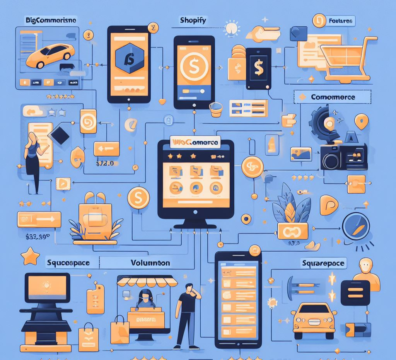The Tech Revolution: A Closer Look at what is Emerging Technology
Unveiling the World of Emerging Technologies: A Comprehensive Exploration
In today’s dynamic digital landscape, emerging technologies serve as catalysts for innovation, driving progress and transformation across industries globally. From artificial intelligence (AI) and machine learning to blockchain and the Internet of Things (IoT), these technologies redefine the way businesses operate. Staying informed and strategically adopting emerging technologies provides a competitive edge, positioning organizations for sustained success.
Empowering Startups with Aloa: what is Emerging Technology A Paradigm Shift in Software Development
For startups and businesses venturing into software development, Aloa stands as a game-changer. Offering a collaborative environment and a vast knowledge base, Aloa empowers startups to effectively leverage emerging technologies. Through close collaboration, Aloa guides startups in developing innovative software solutions, ensuring they have the right technologies from conceptualization to implementation. Let’s explore the fascinating realm of emerging technologies and their potential to transform businesses.
Understanding Emerging Technologies: what is Emerging Technology An In-Depth Overview
The Dynamic Landscape of Emerging Technologies
Emerging technologies encompass groundbreaking advancements at the forefront of development, ranging from AI and quantum computing to virtual reality and automation. Their disruptive nature and transformative impact extend across various sectors, presenting exciting possibilities. Examples abound, from the evolution of email communication to the integration of robotics in manufacturing, showcasing how emerging technologies revolutionize our interactions with the world.
The rapid pace of development is fueled by collaborative efforts and knowledge-sharing across industries, facilitated by platforms like LinkedIn. As technological advancements unfold, staying informed becomes paramount for businesses and individuals alike to thrive in the digital era.
Also Read:-Top 6 WordPress free Malware Removal Plugins in 2023
A Glimpse into Noteworthy Emerging Technologies and what is Emerging Technology
1. Artificial Intelligence (AI) and Natural Language Processing (NLP)
AI, a subset of technology simulating human intelligence in machines, and NLP, focusing on understanding human language, exemplify the transformative power of emerging technologies. OpenAI’s ChatGPT or GPT-4 showcases the capabilities of NLP, generating human-like text based on input.
Notable Features:
- Automation of repetitive tasks
- Optimized decision-making
- Improved operational efficiency
- Sentiment analysis, language translation, and voice recognition
Considerations for Integration:
- Ensure high-quality data for AI algorithms
- Seek expertise in AI and NLP
- Address ethical and privacy concerns
- Prepare for integration challenges
2. Virtual Reality (VR)
Immersive technology simulating realistic, computer-generated environments, VR enhances user experiences through headsets, controllers, and sensors.
Notable Features:
- Realistic visual and auditory experiences
- Exploration of virtual environments
- Interactive simulations and virtual training programs
Considerations for Integration:
- Identify applications for enhanced training and customer experiences
- Assess hardware and software requirements
- Determine content creation approaches
- Prioritize user experience for adoption
3. Augmented Reality (AR)
AR blends digital elements with the real world, overlaying virtual information onto users’ environments. Video Bomb, utilizing AR, creates interactive and immersive experiences.
Notable Features:
- Interactive and dynamic visualizations
- Overlay of virtual objects onto the real world
- Enhanced product visualization and interactive marketing experiences
Considerations for Integration:
- Identify ways AR can enhance user experiences
- Explore AR development tools and platforms
- Ensure compatibility with target devices
- Design intuitive user-friendly interfaces
4. Internet of Things (IoT)
Referring to the network of physical devices with embedded sensors and connectivity, IoT enables automation, monitoring, and control.
Notable Features:
- Remote monitoring and control of devices
- Data collection for analytics
- Predictive maintenance and smart interconnected systems
Considerations for Integration:
- Identify areas for optimizing operations
- Ensure reliable connectivity and sufficient bandwidth
- Implement robust data security and privacy measures
- Plan for scalability and flexibility
5. Machine Learning and Deep Learning
ML focuses on developing algorithms enabling computers to learn from data, while deep learning uses artificial neural networks for complex pattern recognition.
Notable Features:
- Analysis of vast data for accurate predictions
- Image and speech recognition applications
- Recommendation systems and predictive analytics
Considerations for Integration:
- Ensure high-quality data for effective training
- Select suitable ML algorithms or deep neural network architectures
- Allocate sufficient computational resources
- Establish processes for continuous learning and model updates
6. Big Data
Big Data involves processing and analyzing vast and complex datasets, uncovering valuable insights for informed decision-making.
Notable Features:
- Processing and analysis of massive datasets
- Uncovering insights and patterns
- Driving informed decision-making
Considerations for Integration:
- Establish robust data storage and management systems
- Adopt suitable Big Data analytics tools
- Implement proper data governance and security measures
- Plan for scalability and infrastructure needs
7. Blockchain and Web3
Blockchain ensures secure and transparent transactions, while Web3 represents the next internet generation, decentralized and powered by blockchain.
Notable Features:
- Immunity, transparency, and trust in transactions
- Elimination of intermediaries and secure peer-to-peer transactions
Considerations for Integration:
- Identify use cases for decentralized blockchain applications
- Choose the right blockchain platform
- Address privacy and security implications
- Explore collaborations within the blockchain ecosystem
8. Quantum and Edge Computing
Quantum computing utilizes quantum mechanics principles for complex computations, and edge computing processes data closer to its source.
Notable Features:
- Enhanced computational power with quantum computing
- Reduced latency and real-time processing with edge computing
Considerations for Integration:
- Assess readiness for quantum computing adoption
- Evaluate infrastructure requirements for edge computing
- Address data security and privacy concerns
- Explore experimentation and collaboration in quantum and edge computing
9. Biometrics
Biometrics uses unique physical or behavioral characteristics for identification and authentication, enhancing security and convenience.
Notable Features:
- High accuracy and non-repudiation
- Secure and efficient identity verification
Considerations for Integration:
- Implement strong security measures for biometric data
- Ensure integration compatibility
- Evaluate user experience and acceptance
- Address legal and ethical considerations
10. Energy Technologies
Energy technologies focus on efficient energy generation, distribution, and consumption, emphasizing sustainability and renewable sources.
Notable Features:
- Integration of renewable energy sources
- Optimization of energy usage
- Intelligent control over energy systems
Considerations for Integration:
- Assess opportunities for energy-efficient technologies
- Explore integration of renewable energy sources
- Embrace smart grid technologies
- Evaluate energy storage solutions
Impact of Emerging Technologies on Software Development
The emergence of new technologies significantly influences software development strategies, operations, and trends, bringing about key impacts:
- Increased Efficiency and Automation: Robotic Process Automation (RPA) streamlines tasks, reducing manual effort.
- Enhanced Security Measures: Robust cybersecurity measures are paramount for data protection and privacy.
- Integration of Quantum Computing: Quantum computers revolutionize computing capabilities.
- Adoption of Agile and DevOps: Agile methodologies and DevOps approaches enhance development cycles.
- Embracing Digital Transformation: Businesses modernize strategies, leveraging cloud computing and big data analytics.
- Incorporating Blockchain Technology: Blockchain enhances transparency, security, and trust in software solutions.







